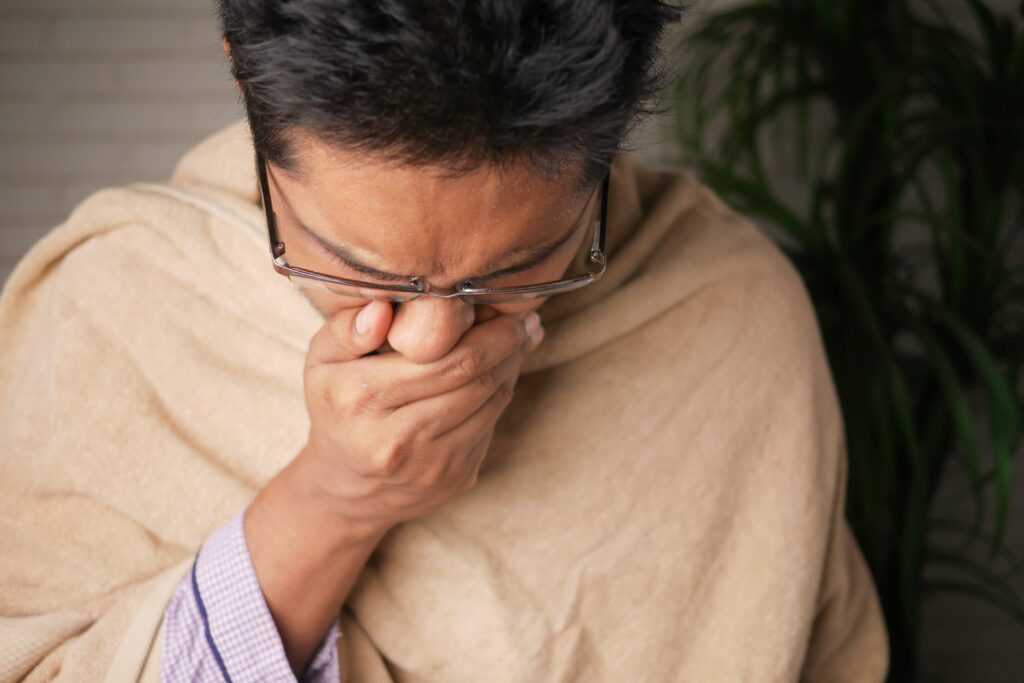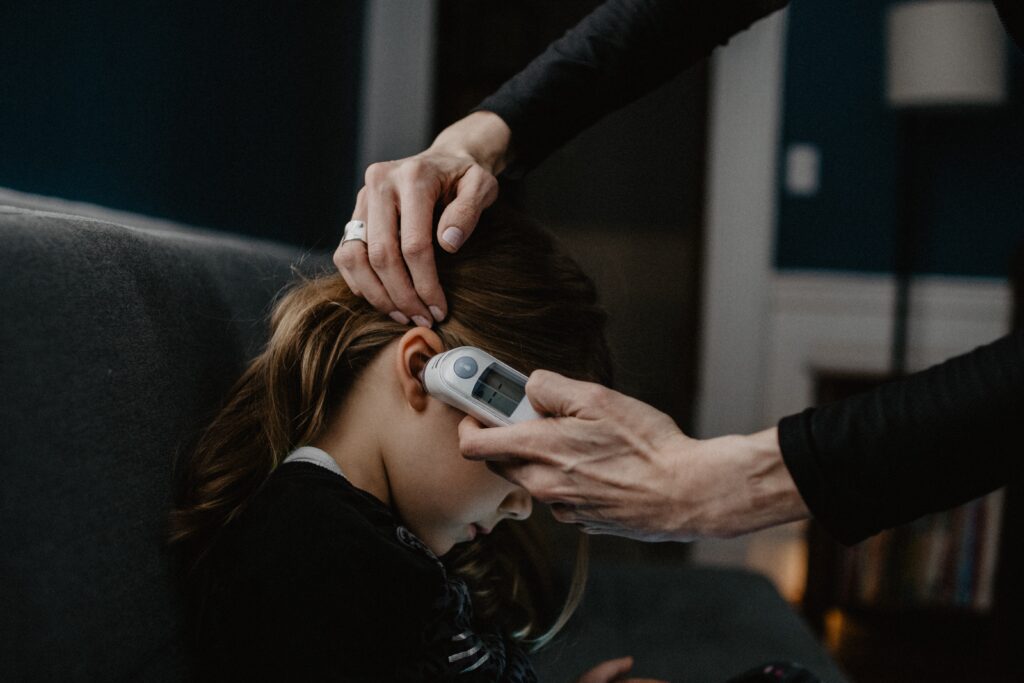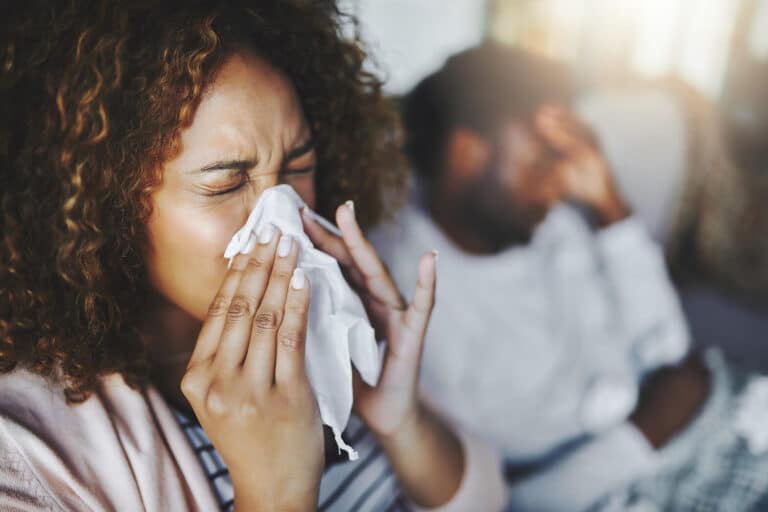Yesterday you felt completely fine, but today you’ve woken up with a scratchy throat and runny nose. The first symptoms of a cold are unmistakable, but what will you feel like for the rest of your week? And these days, there’s another virus to look out for too.
Although they may seem unpredictable, the symptoms and duration of a cold usually come on in stages on a timeline. From the common cold progression of symptoms to telling if it’s Covid, and even how to get rid of a cold fast – here’s your guide to understanding the common cold stages.
Understanding the Common Cold Stages
Stage 1: Incubation. After you’re exposed to a cold virus, the first sign of symptoms will develop and can last anywhere from 12 hours up to 3 days.
Stage 2: Symptoms peak. Symptoms of a cold appear and usually peak within 1 to 3 days. While these vary from person to person, typical symptoms include:
- Sore or scratchy throat
- Blocked or runny nose
- Sneezing
- Coughing
- Headaches
- Body aches
- Watery eyes
- Fever (more common in children)
- Fatigue
Stage 3: Remission. Symptoms of the common cold usually last anywhere from 3 to 10 days. These will eventually start to lessen and eventually go away.
Stage 4: Recovery. You may also be thinking, “How long does a common cold usually last?”. Much like the symptoms, each person will recover differently. Although lingering symptoms might stick around for up to 2 weeks, these are usually mild, and by now, you should feel back to normal or close to it.

What Exactly Is A Cold?
A cold is a virus that infects the upper respiratory tract – nose, sinuses, voice box, and throat. While over 200 different viruses can cause a cold, the rhinovirus is the most common culprit.
Colds are spread when you inhale a virus that has been coughed or sneezed into the air by an infected person or when you’ve been in close contact with an infected person or surface.
While more common in spring and winter, you can still catch a cold any time of year. Each year, adults have an average of 2 to 3 colds, and children have even more.
How Long Are You Contagious?
A cold’s contagious period usually starts one or two days before cold symptoms kick in and continue as long as your symptoms are present. But you are more likely to spread the virus in the first 2 to 3 days when the symptoms peak.
If you are sick, it’s always best to stay home from work or school. And if your child is sick, keep them out of daycare or school. This means you need to prevent spreading the infection by washing your hands frequently, fully covering your mouth and nose when coughing or sneezing, and not touching others.

How Can You Tell a Cold from COVID?
Distinguishing between the common cold, COVID-19, and the flu can be tricky because they share many traits. And because they are caused by different germs that affect the respiratory system, it’s possible – although only in rare cases – for them to overlap. Meaning, you could essentially have more than one, at the same time, according to the CDC.
One clue for telling them apart is fever. Typically, adults don’t experience fevers with the common cold. But with COVID, it’s kind of common to have a low-grade fever, and you will probably experience a fever initially with the flu.
The CDC also says that flu symptoms normally appear suddenly rather than build up gradually, like with the common cold. And they’re also more intense and last longer. Symptoms of COVID-19 also seem to develop gradually and are more uncommon, such as diarrhea and loss of taste or smell.
Contact your doctor if any symptoms worsen or become concerning to you. Be especially alert to the emergency warning signs of COVID-19. If someone is showing any of the following warning signs, they should seek emergency medical care immediately:
- Trouble breathing
- Persistent pain or pressure in the chest
- New confusion
- Inability to wake up or stay awake
- Bluish lips or face
How Is a Cold Diagnosed?
The common cold is diagnosed based on a history of the patient’s reported symptoms and a physical examination. Testing isn’t usually needed to diagnose a common cold but may be used to rule out other infections that cause similar symptoms. Some of the tests include:
- Nasal swab testing for coronavirus
- RIDTs (Rapid influenza diagnostic tests) or rapid molecular assays for flu
- Chest x-rays for lower respiratory tract infection

How Do I Speed Up My Cold Recovery?
There is no cure for the common cold, and antibiotics can’t treat colds caused by viruses. Usually, the best way to relieve symptoms of the common cold and speed up recovery is through the help of home remedies.
- Rest – sleeping the cold off is usually the best way to recover quicker
- Drink plenty of fluids
- Moisturize the air around you through a humidifier or cool mist vaporizer
- Breathe in steam from a bowl of hot water or steam in the shower
- Use saline nasal spray or drops to moisten nasal passages
- Get over-the-counter medication to relieve symptoms:
- Throat lozenges to relieve sore throat
- Pain and fever reducers like aspirin, Tylenol, Advil, and Motrin
- Cough and cold medicines
Can Sitting in the Sun Help With a Cold?
As you progress through the common cold stages and recover you might be wondering whether getting some extra sunshine will help your body heal quicker. Well, there’s evidence that absorbing more immune-system-boosting vitamin D may help prevent the flu as fall progresses. According to a new working paper by the National Bureau of Economic Research, states that see an unusually high number of sunny days in a month can also expect to see an unusually low number of flu cases during that time.
Can You Sweat Out a Cold?
You might have heard that it’s beneficial to “sweat out a cold” – and while exposure to heated air or exercising may help to temporarily relieve cold symptoms, there’s little evidence to suggest that this can help treat a cold.
You can attempt to “sweat out a cold” through methods like:
- Inhaling steam
- Visiting a sauna or steam room
- Exercising
These activities may help relieve nasal congestion because they help loosen nasal mucus. However, it’s really the exposure to warm, moist air or exercise, and not the actual sweat. These will provide some relief but won’t shorten the time you’re sick. Be careful that you don’t exercise if you’re sick and don’t dehydrate yourself by sweating out all your electrolytes.
When Should I See a Doctor?
After about 2 weeks, you should have gone through all of the common cold stages. But if your symptoms don’t get better in 10 days, or if your symptoms are severe or unusual, you should make an appointment to see your doctor.












